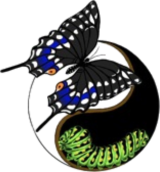F.A.Q.
Acupuncture is generally a painless experience. Patients may feel a slight prick or tingling sensation as the needle is inserted, but most people find the treatment to be quite relaxing.
Acupuncture needles are as thin as a human hair, they are solid with a rounded tip, rather than hallow with a cutting edge as are hypodermic needles. While acupuncture is not sensation-less, painful is not the most accurate word to describe it. The desirable sensation of an acupuncture needle is not sharp or stabbing. Oftentimes, many people will feel a variety of sensations including a heavy, dull, achey or warm sensation. In addition some may feel “traveling sensations” such as movement in other parts of the body, possibly even in locations where there are no needles inserted.
Most people find acupuncture very relaxing; in fact many people easily doze off for a nap while the needles are still inserted.
Acupuncture is generally considered safe when performed by a licensed and trained practitioner. At our clinic, we use sterile, disposable needles to prevent infection and follow strict safety protocols to ensure the safety of our patients.
It is important to tell your acupuncturist if you suspect you’re pregnant because this will change which points are selected for your acupuncture treatments.
If a substantial number of people are exposed to the same common cold pathogen, why do only some of them get sick and why does the cold manifest differently for each person? What dictates the slight variations in the cold? From a Chinese Medicine perspective, each patient is treated as an individual because it is thought that each patient has a tendency to different variations of disease. These variations are thought to be predetermined and also influenced by the way we treat our bodies daily.
Given the patient’s constitution, disease can be predicted or prevented. This is partially the reason why you don’t have to be sick to receive acupuncture and is especially true during season changes, when the body is most susceptible to disease.
